“There are two kings in England, namely: the Lord King of England, who wears a crown on his head as a symbol of his rank, and the Bishop of Durham, who wears a miter instead of a crown as a sign of his sovereignty over the diocese of Durham“.
Antony Bek was no ordinary ecclesiastical leader; he was a significant figure in the tumultuous era of the late 13th and early 14th centuries in England, notably during the Scottish Wars of Independence. His unique combination of religious authority and military involvement makes his story compelling and relevant to understanding the complexities of Northumbrian medieval society.
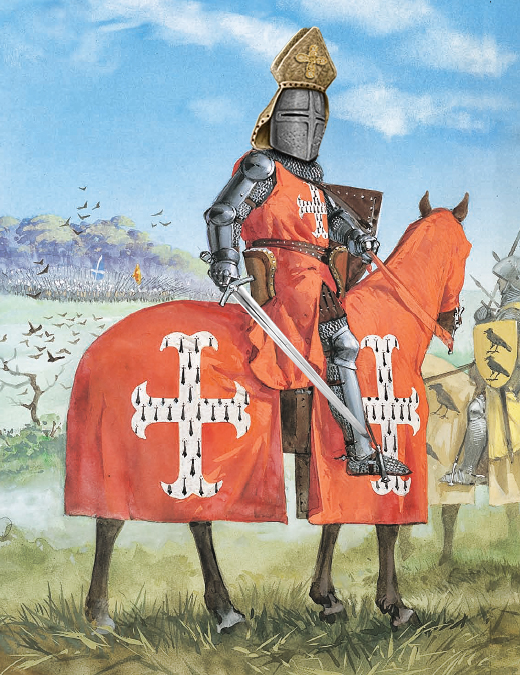
July 22, 1298.
Early Life and Background
Antony Bek was born around 1337, into a minor noble family; his father, Walter Bek, owned lands in Eresby, Lincolnshire. This background afforded him clerical education and military training, which was typical for Christian leaders of the time who were expected to protect their territories and congregants. Bishops during this era often held lands and military roles, enabling them to exert considerable power. Bek notably participated in the Crusade with Edward I in 1270, underscoring his keenness in both religious and military endeavors.
Becoming Bishop of Durham
In 1284, Bek was appointed Bishop of Durham; a diocese that carried considerable influence due to its ‘proximity to Scotland’ and wealth. The Bishop of Durham had unique powers, including the ability to exercise temporal authority over the rowdy northern territories of England, which were often tumultuous and required strong leadership. Bek’s dual identity allowed him to navigate both ecclesiastical and military responsibilities effectively.
The Defeat of Wallace and the Wars of Scottish Independence
As Scotland faced increasing influence from England, the late 13th century was marked by the Wars of Scottish Independence. King Edward I sought to extend his political influence over a Scotland, almost consumed by internal wrangling for power. Bek became an active participant in this military campaign. His involvement exemplified the warrior bishop archetype, where spiritual leaders played crucial roles in territorial conflicts.
The pivotal Battle of Falkirk in 1298 saw Antony Bek mobilizing forces alongside Edward I to confront the Scottish leaders, including the renowned William Wallace. Wallace had instilled fear and chaos in the English border regions, leading raids that terrorized local communities and challenged English authority. In response, Bek played a crucial role in uniting churchmen and lay soldiers from the local Northumbrian militia, reflecting a significant shift in the church’s role toward active participation in military endeavors. His ability to rally these forces not only underscored the melding of ecclesiastical and martial duties but also highlighted the urgency for a coordinated defense against the Scottish threat that Wallace embodied.
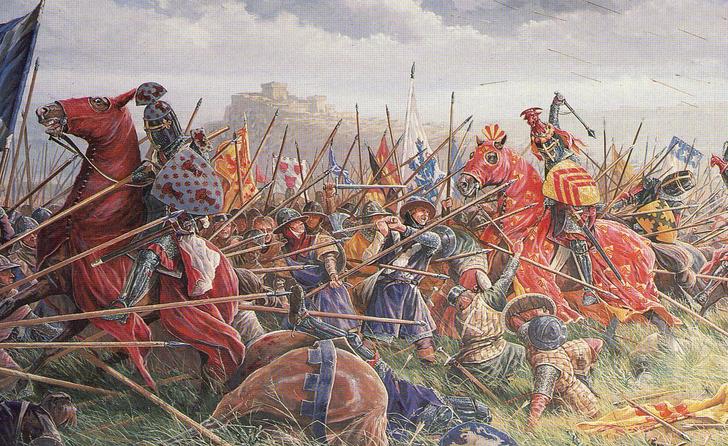
July 22, 1298.
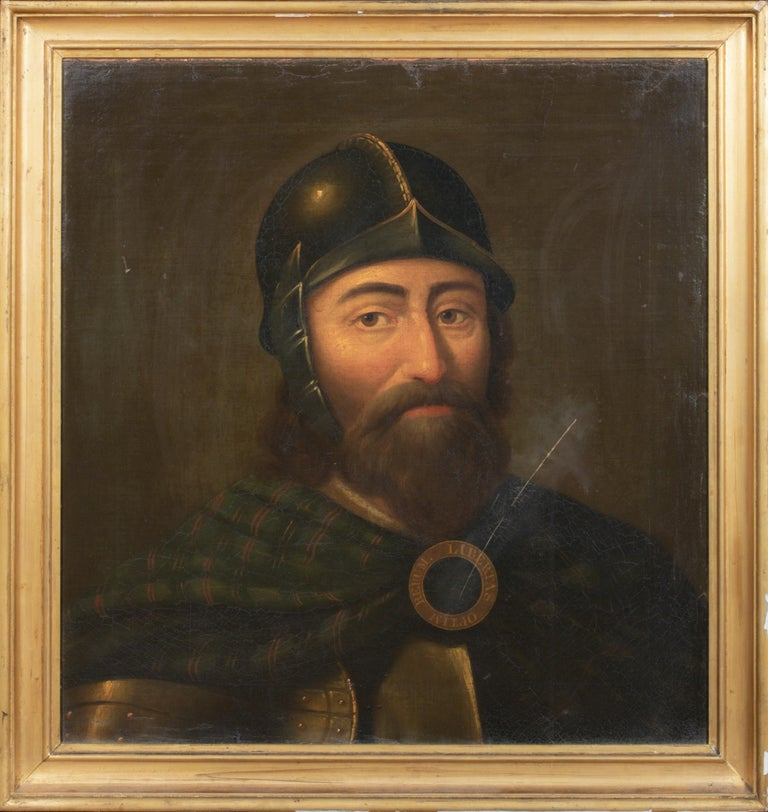
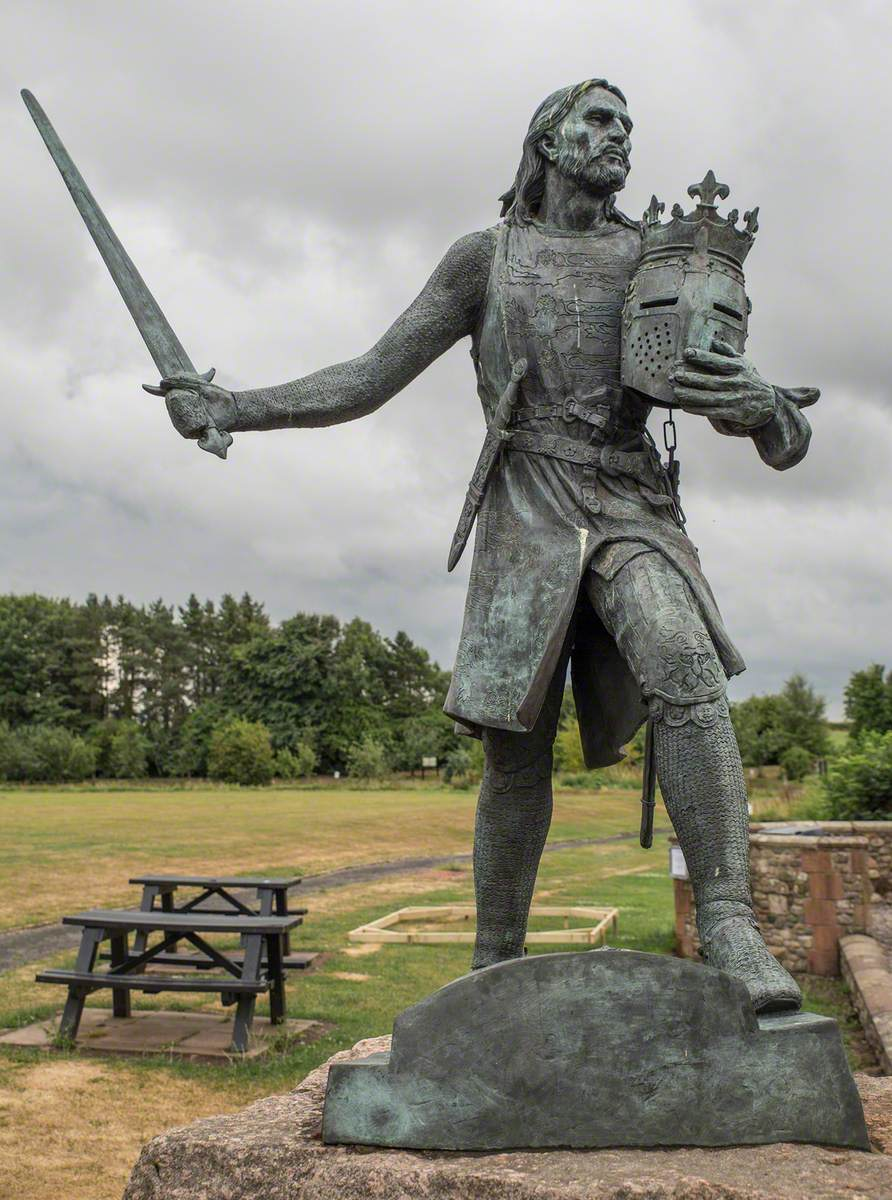
Contribution to the English Cause
Following the fall of Wallace, Bek’s influence grew as the situation in Scotland remained volatile. He continued to lend support to Edward I, contributing both resources and men for various military campaigns. Bek’s involvement showcased the clerical commitment to the monarchy and the preservation of English territories.
However, the role of a warrior bishop was not without its complexities. Bek was often caught between the demands of faith and the harsh realities of warfare. His position reflected the moral dilemmas faced by many ecclesiastical leaders at the time, as they sought to balance their spiritual duties with the pressures of military and political authority.
The CINEMATIC ‘Face-Palm’
Political Maneuvering
In addition to his military responsibilities, Bek adeptly navigated the political landscape of England. His position allowed him to engage in diplomatic affairs and influence critical decisions at Edward’s court. He exemplified leadership not only through battlefield prowess but also through political acumen.
The relationship between Bek and Edward I was mutually beneficial. Bek gained the king’s trust, and in return, the king recognized the importance of having influential bishops like Bek on his side to maintain order and authority in Northumbria. The collaboration between church and state was foundational during this period, as ecclesiastical leaders often acted as mediators in the complex political landscape.
Also of note, in 1306 Pope Clement V made Bek Patriarch of Jerusalem and therefore the most senior member of the clergy in England.
Bek The Builder, Can He Build it!
Antony Bek played a significant role in the construction and development of Durham Cathedral, one of the most important examples of Norman architecture in England. While he did not oversee the entire construction of the cathedral, as it began before his tenure, his contributions are notable in several areas:
- Completion of the Nave: During Bek’s tenure as bishop from 1284 to 1310, work on the nave was completed, making it a central feature of the cathedral. He ensured that the structure was finished in a manner consistent with its grand design.
- East End and Choir Expansion: Bek was instrumental in expanding the east end of the cathedral, including the construction of new chapels. This expansion included work on the choir, allowing for the increased liturgical space needed for the growing community of monks and worshippers.
- The Chapter House: Though it began earlier, the chapter house, which is part of the cathedral complex, was completed during Bek’s time. It served as a meeting place for the clergy, reflecting the administrative and communal aspects of church life.
- Bishop’s Throne: Bek oversaw the installation of the bishop’s throne, also known as the cathedra, which is a symbol of the bishop’s authority. This would have been a crucial feature in the cathedral, marking the spiritual leadership of the bishop in the diocese.
- Institutional Enhancements: Under his leadership, resources were allocated to enhance the cathedral’s facilities, including chapels and altars that served both liturgical and commemorative purposes.
Bek’s contributions were significant in shaping the cathedral into a prominent spiritual and architectural landmark, as it became not only a site of worship but also a symbol of the power and influence of the bishopric in the medieval period.
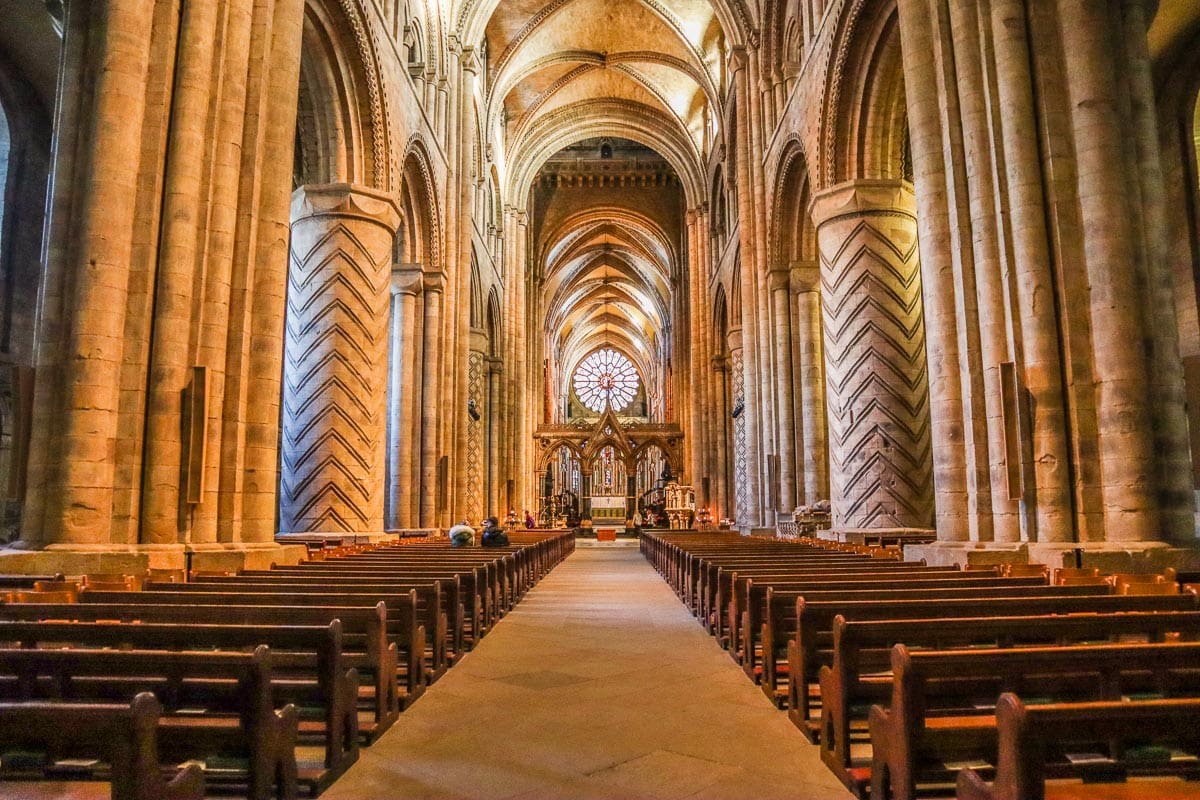
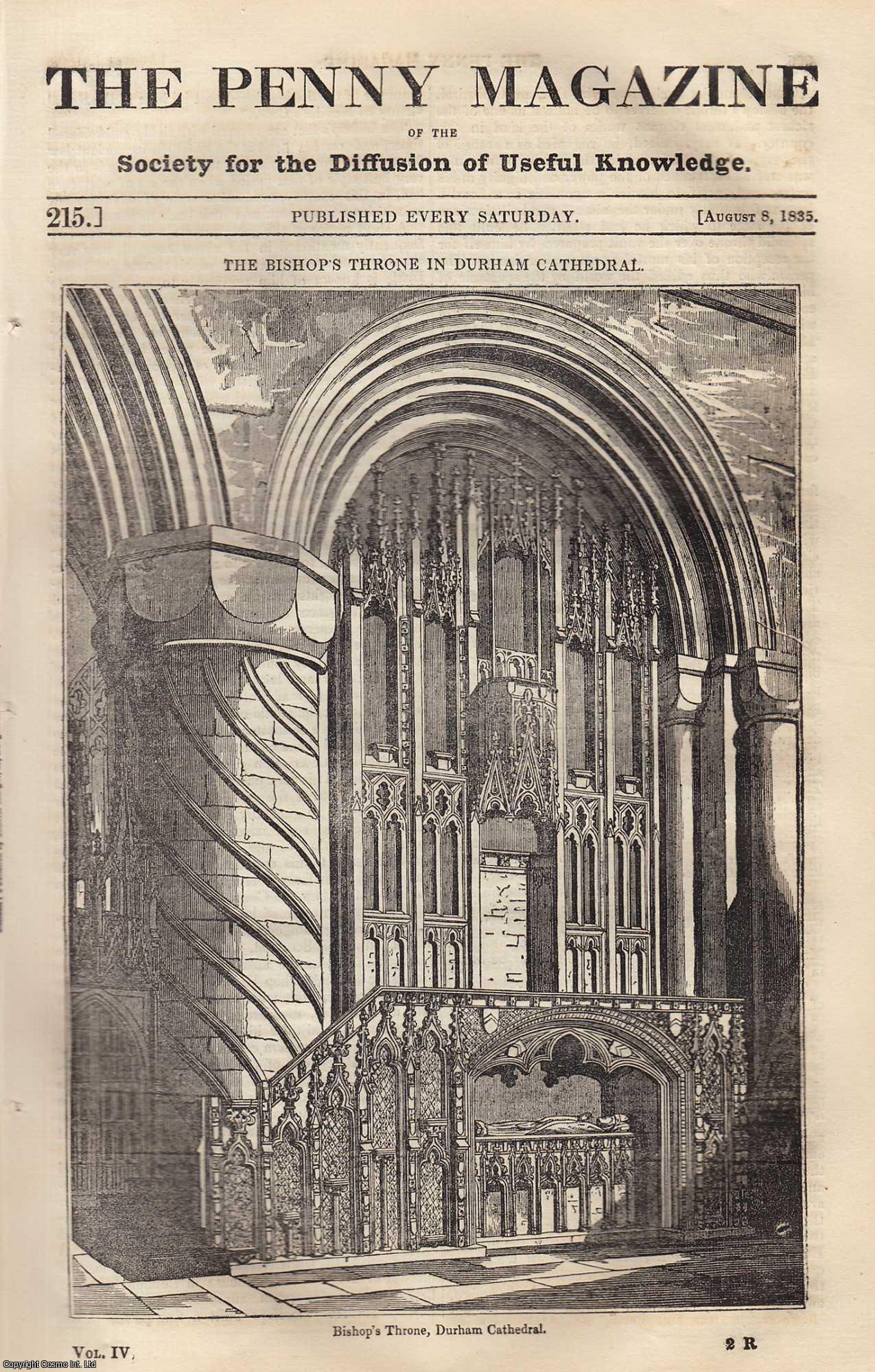
Other Notable Achievements
In addition to his significant contributions to Durham Cathedral, Antony Bek was involved in several other notable construction projects and architectural initiatives during his time as Bishop of Durham. Here are a few key examples:
- Durham Castle: Bek enhanced and fortified the Bishop’s Castle, which served both as a residence for the bishop and a stronghold for the defense of the region. His efforts focused on reinforcing its walls and structures to withstand potential attacks, particularly during the conflicts with Scotland.
- The Palace of Bishops: He undertook improvements to the Bishop’s Palace, defences and grounds, aiming to create a more functional and comfortable residence that could accommodate visitors and serve as a place for ecclesiastical meetings.
- St. Oswald’s Church: Bek was influential in the construction and reconstruction of several churches in the region. One example is St. Oswald’s Church in Durham, where he may have had a hand in renovations or enhancements to reflect the growing importance of the church and its community.
- Other Monastic Foundations: Bek was known for supporting monastic communities, so he may have been involved in the construction or improvement of buildings at various monasteries and priories in his diocese, emphasizing his commitment to the monastic life and the spread of religious institutions.
- Infrastructure Development: Beyond ecclesiastical buildings, Bek also supported the construction of bridges and roads to improve access to Durham and enhance trade and communication in the region. This would align with the broader medieval strategy of promoting economic stability and security.
- Military Fortifications: Given the ongoing tensions during his tenure, Bek likely supported the construction of defensive structures in other parts of his diocese, contributing to the overall military readiness of Northern England against Scottish threats.
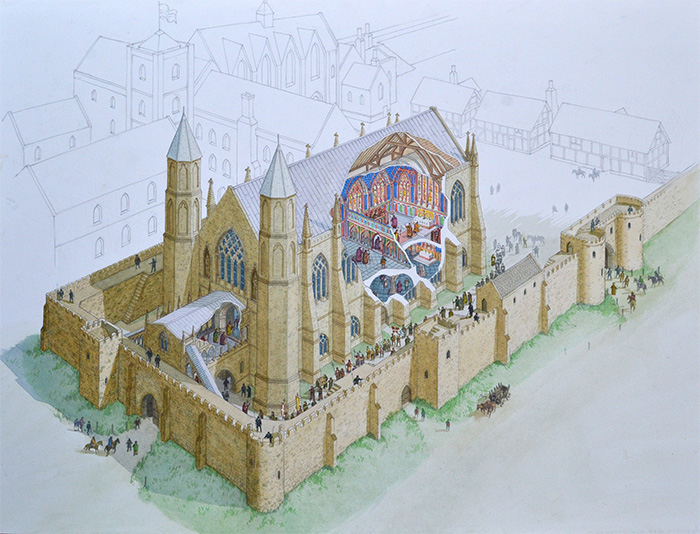
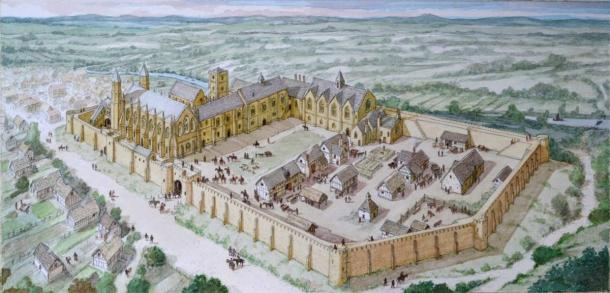
Bek’s architectural contributions reflect a broader vision of integrating religious, residential, and defensive spaces, showcasing his understanding of the multifaceted role a bishopric played in medieval society. His projects not only served immediate practical needs but also aimed at establishing an enduring legacy of ecclesiastical power and community stability.
The Destruction of an Architectural Gem
Bek’s Chapel, known for its luxurious construction akin to continental chapels like Sainte-Chapelle, was largely demolished in 1646 by English politician, Sir Arthur Haselrig during the English Civil War. He built a mansion on the site, but after the war, the castle was rebuilt and the banqueting hall was transformed into a new chapel.
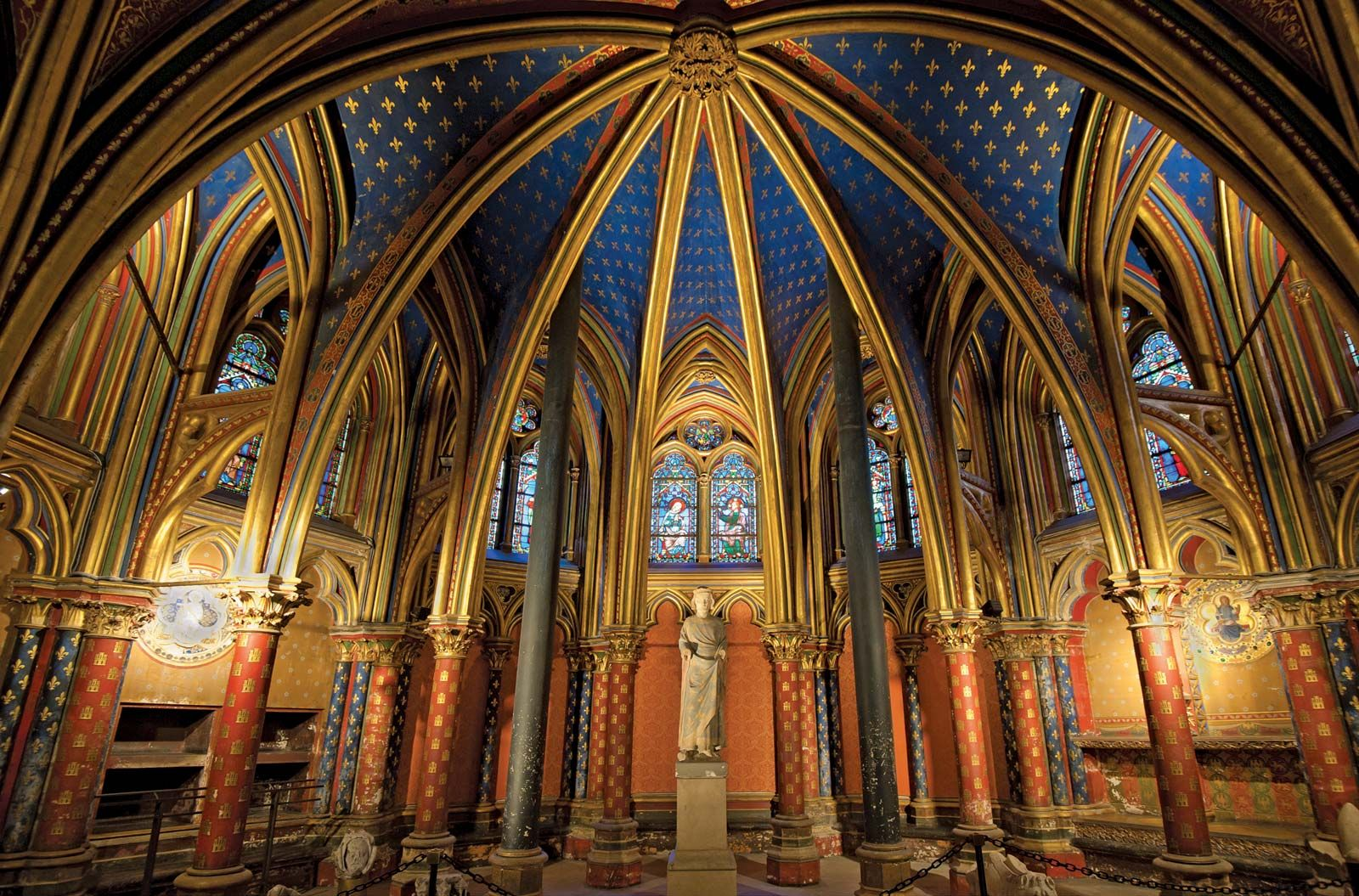
Legacy of the Warrior Bishop
Antony Bek passed away in 1311, leaving a profound legacy as the last notable warrior bishops of Northumbria. His death marked a pivotal shift in the roles of bishops in the region, signifying the increasing separation of church and state and the decline of feudalism, which would render the traditional model of the warrior bishop increasingly rare in the centuries to come.
Bek’s contributions to Northumbria were significant on multiple fronts. Firstly, his leadership illustrated how the church actively engaged in both governance and military affairs during a tumultuous period in the region’s history. As bishop, Bek was not only a spiritual leader but also a military commander, influencing the defense and administration of his diocese amid ongoing border conflicts with the Scots.
In addition to his military accomplishments, Bek left an indelible mark on the architectural landscape of Northumbria. He played a crucial role in the restoration and construction of key structures, including the iconic Durham Cathedral. This magnificent building, a UNESCO World Heritage Site, stands as a testament to his vision and commitment to matters of the church, showcasing the Norman architectural style and becoming a symbol of ecclesiastical power in northern England. Bek’s contributions to the cathedral reflected both his dedication to his faith and his desire to solidify the church’s influence in the region.
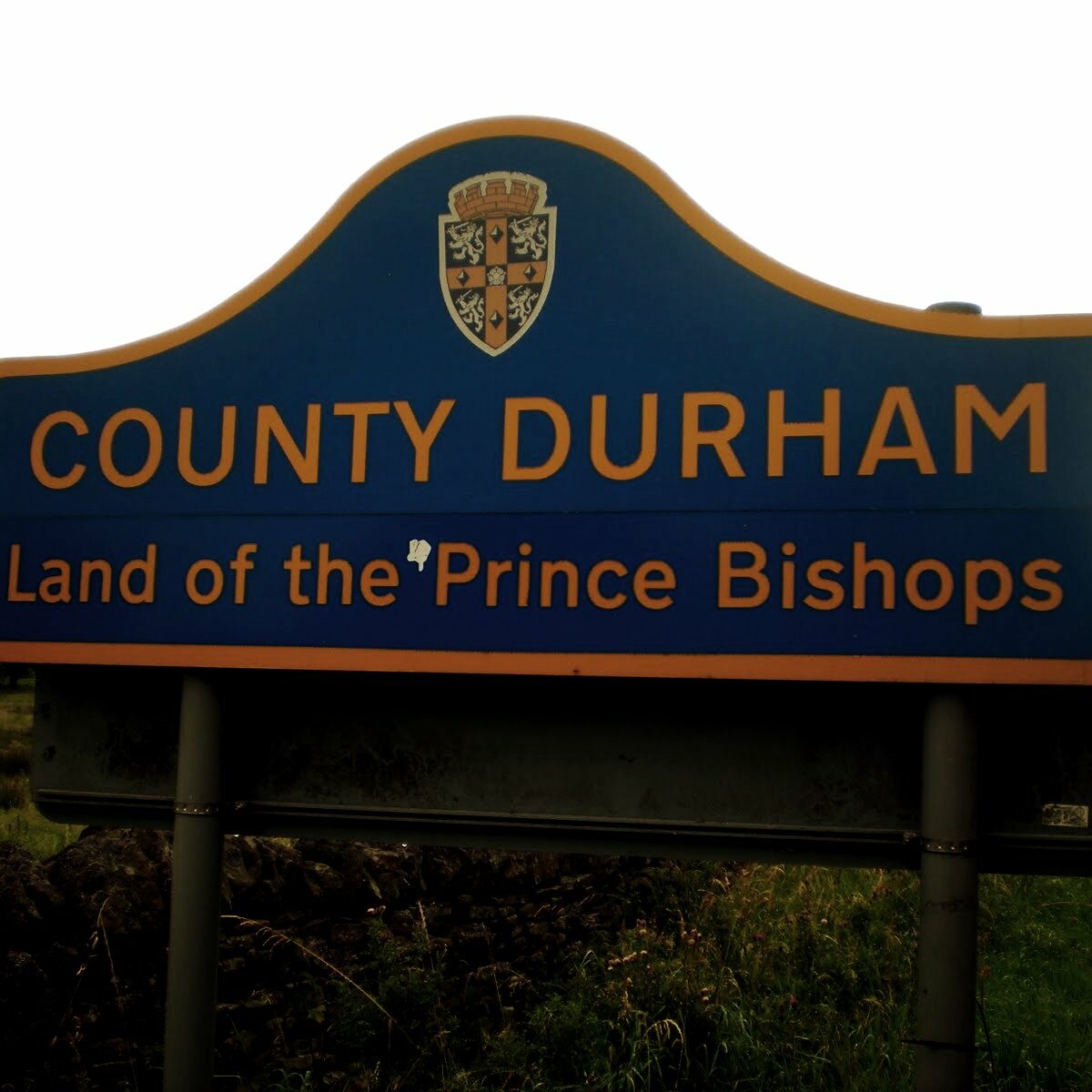
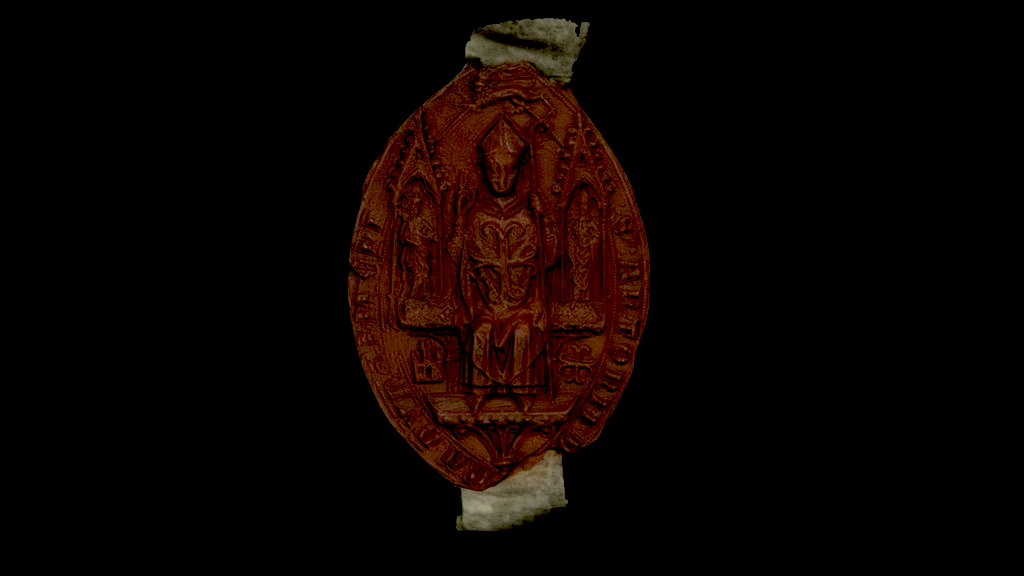
The content on this site is for entertainment purposes, sometimes, with a light comedic sprinkling. I beseech thee; always do your own research!
Modern Peasant
Cheers x
Please subscribe for more of this stuff!
Modern Peasant on Substack: modernpeasant.substack.com
Or simply subscribe here! Cheers. 🙂



